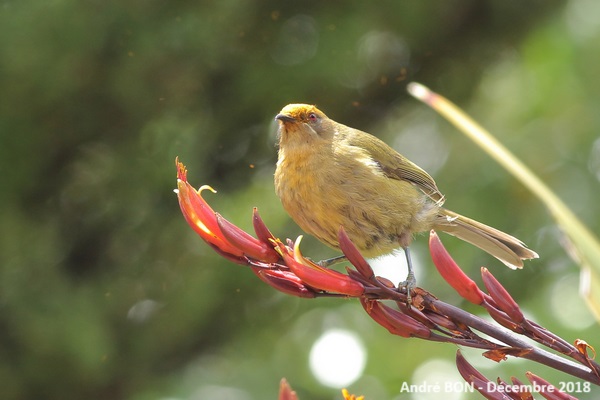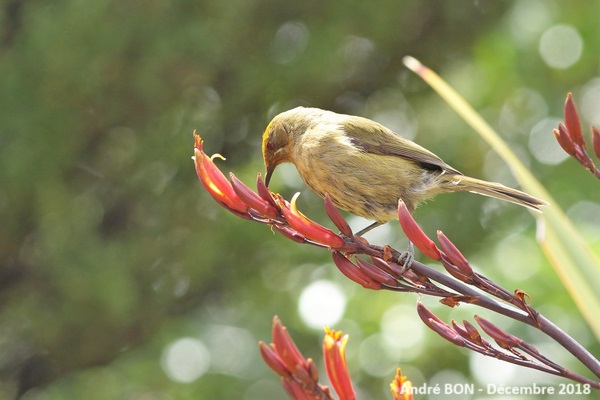


| New Zealand Bellbird (Anthornis melanura (Sparrman, 1786)) |



|
|
Scientific name: Anthornis melanura (Sparrman, 1786) Common name: New Zealand Bellbird Other names: Maori names: Korimako and Makomako. French name: Méliphage carillonneur Order: Passeriformes Family: Meliphagidae Size: Body size: 17 to 20 cm; Weight: About 32 g for males and 25 g for females; Wingspan: About 22 cm. Habitat: Forests, parks and gardens. Food: Nectar and fruits, insects in autumn and winter. New Zealand Bellbirds have a tongue adapted to collecting nectar from flowers and honeydew from tree trunks. They participate in the pollination of many plants by transporting pollen attached to their feathers. Nesting: The nest, built by the female, is a small cup well hidden on the ground or in a tree. There are one or two clutches of 3 to 5 eggs per year. Migration: Mainly sedentary with some movement depending on the seasons and availability of food. Geographic area: New Zealand and small surrounding islands. |
The New Zealand Bellbird has a dark greenish plumage above and lighter below. It is known for its very melodious singing. The male's head is grey with purple sheens. The bill is slightly curved downwards. The eye is red. The wings and tail are bluish black. The female resembles the male with paler colours. There are no purple sheens on the head and the wings and tail are more brownish. It is also recognized by the presence of a thin white moustache. Juvenile females have a yellowish moustache and brown eyes. Juvenile males have brownish wings and tail. |
| [To know more about the New Zealand Bellbird] [Next picture] [Top] |

|
The thin white moustache indicates a female New Zealand Bellbird. It is perched on New Zealand Flax (Phormium tenax). |
| [To know more about the New Zealand Bellbird] [Next picture] [Previous picture] [Top] |

|
The top of the head is yellow because it is covered with pollen which will be carried to other Flax plants. |
| [To know more about the New Zealand Bellbird] [Previous picture] [Top] |

|
The New Zealand Bellbird's tongue enables it to collect nectar. |